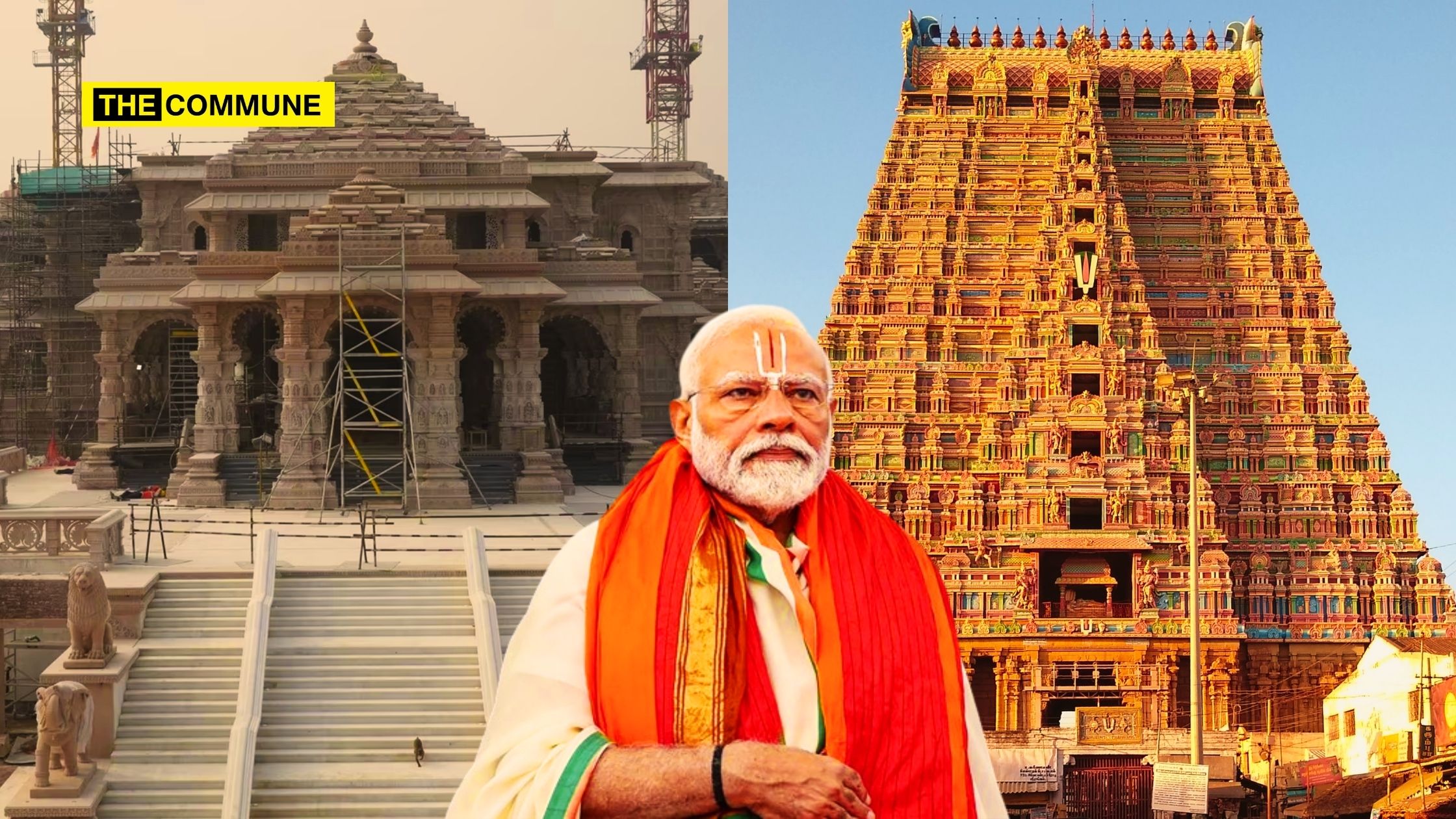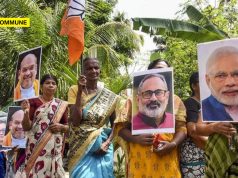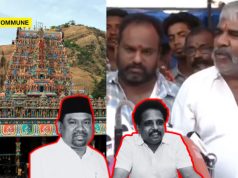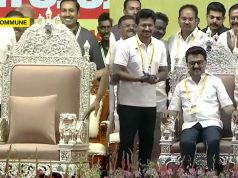
“In Srivaishnava sampradayam (tradition), Perumal refers to Sri Rama,” explains Badri Bhattar, the sthalathar or hereditary custodian of the Srirangam Ranganathaswamy temple in Trichy, Tamil Nadu.
Bhattar is referring to the ancient and influential sect within Hinduism which was started by the great guru and philosopher Ramanujacharya who lived during the time of the Chola kings in the early 1000s CE.
Perumal, in Tamil, means God but when used by followers of Ramanujacharya, it means Lord Rama.
The Sri Ranganathaswamy temple is famed for the enormous statue of Lord Ranganatha (Lord Vishnu) lying down in ananthasayanam (blissful sleep) in His abode of Srivaikuntham.
“There is an intricate connection between Ayodhya and Srirangam,” says Badri Bhattar. “And this is the reason why we were of the view that the Prime Minister must visit Srirangam before the Pran Pratishta (consecration) ceremony of the Ram temple,” he adds.
Bhattar is a direct descendant of Koorathalvar, one of the two key disciples of Sri Ramanujacharya and is a hereditary trustee of the Srirangam temple, although it is now under the control of the government of Tamil Nadu.
Sri Ranganatha & Sri Rama
The story connecting Lord Rama and Lord Ranganatha is told in the Ayodhya Kandam (Ayodhya Kand in Hindi) of the Valmiki Ramayana.
“Sahapathnya Vishaalaakshyaa Naarayana Mupaagamath – Seetha and Rama together went to their kula deivam (kula devata) Narayana’s temple and did pooja. This is a verse in the Ramayana,” explains Bhattar. “It also says that as Seetha sat beside Lord Rama and handed him the flowers and other pooja items, she was mesmerized by the beauty of one God praying to the same God. It is described that her eyes expanded in joy at the sight. That is why she is called Vishalakshi. This too is mentioned in the Ramayana,” he adds.
“Since Lord Rama prayed to Lord Ranganatha, and since Lord Rama is called Perumal in the Srivaishnava tradition, we call Lord Ranganatha as Periyaperumal,” says Bhattar. Periya in Tamil means elder or big.
“Lord Rama prayed to Lord Ranganatha before his coronation and asked that his stepmother Kaikeyi should ask his father King Dasharatha for a boon,” explains Rangarajan Narasimhan, a devotee and activist fighting to free the Srirangam temple from government control.
There is another fascinating story as to how Lord Ranganatha became the kula deivata of the Suryavamshis, the dynasty into which Lord Rama was born.
One of the earliest kings of the Suryavamshi dynasty was King Ikshvaku. In fact, the dynasty is also referred to as Ikshvaku interchangeably.
It is said that Lord Ranganathar used to live in Satyaloka where Lord Brahma too resided. King Ikshvaku is said to have had a glimpse of Lord Ranganathar and was mesmerized by the sight. Longing to bring the Lord to his kingdom, Ikshvaku does penance to propitiate Lord Brahma. This is how Lord Ranganathar arrives in Ayodhya. He is called Ikshvaku Dhanam in the Ramayana – the wealth of the Ikshvakus. All the kings after Ikshvaku worshipped Lord Ranganathar.
From Ayodhya to Srirangam
But how did Sri Ranganatha go from Ayodhya in the north to Srirangam in the south? That story too is interwoven in the Ramayana.
When King Dasharatha performs the Putrakameshti Yagya in order to have children, all the kings across India are invited. One king from present day Tamil Nadu too goes to Ayodhya – his name is Dharmavarman.
Dharmavarman too is mesmerized by the sight of Lord Ranganatha and upon hearing the story of Ikshvaku, he decided that he must somehow bring Lord Ranganatha to his kingdom. He begins his penance.
“Dharmavarman sat at the banks of the Chandrapushkarini theertham, a pond in Srirangam and prays for Lord Ranganatha to come. Rishis in the area ask what Dharmavarman was doing penance for – when told, they say that Perumal had already decided that He would reside in Srirangam,” narrates Badri Bhattar.
After winning the war against Ravana and returning to Ayodhya after 14 years of exile in the forests, Lord Rama and Seetha honour those who stood with them during the war.
Of special mention is the role of Vibheeshana – brother of Ravana who was of crucial support in winning the dharmic war. Vibheeshana had followed Lord Rama to Ayodhya, renouncing Lanka and wanting to remain with the Lord.
“But Lord Rama told him that he had a duty to his people and that he must go back to Lanka and rebuild the destroyed land,” explains Bhattar. “Lord Rama gave his kula deivam Lord Ranganatha to Vibheeshana and told him to take the Lord in his stead,” says Bhattar, quoting from the Uttara Kandam.
Vibheeshana sets off south towards Lanka and as he arrives near Srirangam, he is captivated by the beautiful land surrounded by the swirling Cauvery river. He decided to stop and conduct poojas for Lord Ranganatha there.
King Dharmavarman who had been in penance cannot believe his eyes – Lord Ranganatha had arrived in his kingdom. His joy is shortlived though, when he hears that Vibheeshana was to take the Lord away in a few days. Dharmavarman beseeches and pleads with Vibheeshana to allow the Adi Brahmotsavam festival to take place before moving ahead. Since the festival was scheduled to begin the next day, Vibheeshana agreed.
The Brahmotsavam festivities were conducted in a grand manner for the next nine days by Dharmavarman.
On the tenth day, Vibheeshana decides to start back to Lanka. He tries to pick up the idol of Sri Ranganatha but he is unable to lift it off the ground.
“Periyaperumal speaks to Vibheeshana and tells him – I will live here henceforth,” says Rangarajan Narasimhan. “Vibheeshana was heartbroken and asked the Lord – you said you will come to my land. How can you now change your mind? To this, Lord Ranganatha said that He will always watch over him. This is why the deity faces south, toward Lanka,” explains Narasimhan.
“Lord Rama in Ayodhya too looks south towards his kula deivam Lord Ranganatha,” adds Badri Bhattar.
Vibheeshana, it is believed, built the very first temple for Lord Ranganatha at Srirangam.
It is also only in Srirangam that Vibheeshana is worshipped as an Alwar, one of the great devotees of Lord Vishnu.
In subsequent years, the Srirangam temple is said to have been submerged in the Cauvery river. “A Chola king called Kili Chola (kili means parrot in Tamil) had a dream in which it was revealed that Srirangam was underwater and that Lord Ranganatha was there, so the king must reconstruct the temple,” says Rangarajan Narasimhan. “It is this king who dug the temple out and rebuilt it. It was subsequently rebuilt by other kings. When Ramanujacharya came to Srirangam, he restructured the temple,” he says.
The Prime Minister praying to Lord Ranganatha before consecration of the Lord Ram temple in Ayodhya is an unmistakeable tip of the hat to the traditions of kings of yore.
Sandhya Ravishankar is a freelance journalist and a Ramnath Goenka awardee.
Subscribe to our channels on Telegram, WhatsApp, and Instagram and get the best stories of the day delivered to you personally.




